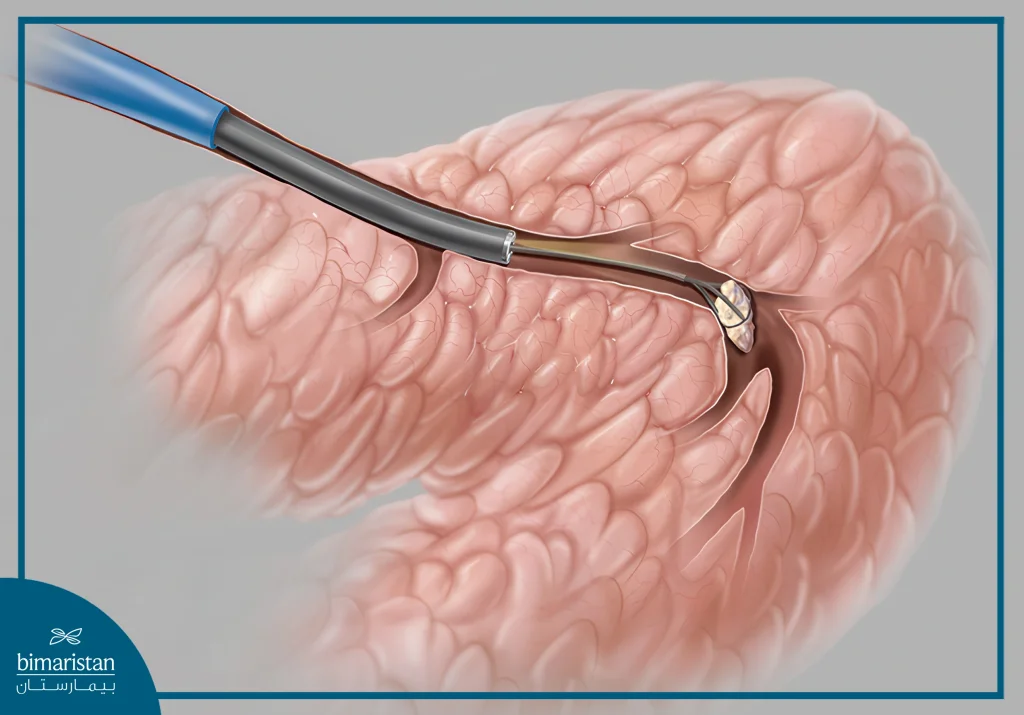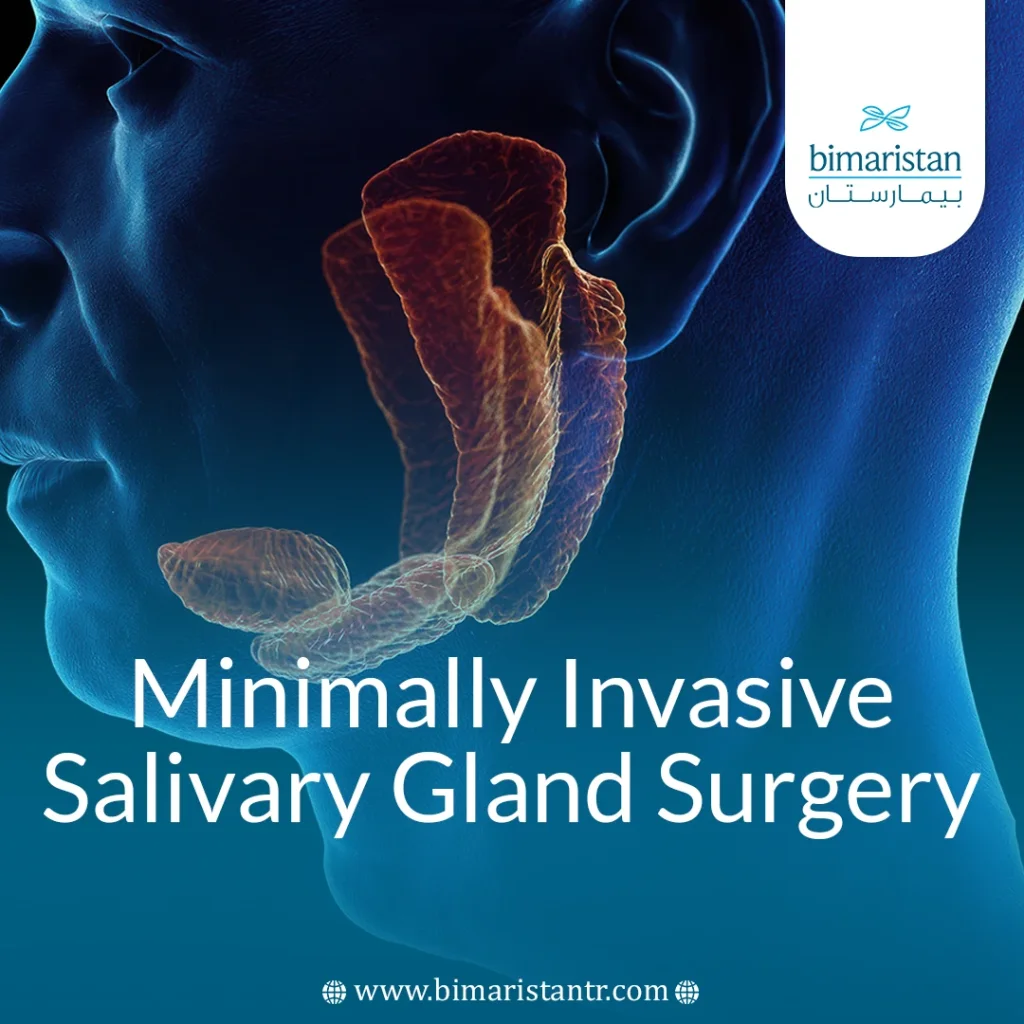The salivary glands are exocrine glands that play an important role in secreting saliva and keeping the mouth moist, and the importance of these glands comes orally because they moisturize food to improve chewing and swallowing, in addition to saliva containing substances that kill oral bacteria, which supports oral hygiene and health. Digestively, they play an important role through the enzymes contained in saliva, amylase and lipase, which help start the digestion of sugars and fats, and since the mouth area is in contact with the external environment, it is prone to diseases such as stones, infections, and tumors that may require surgical intervention.
With the development of medical techniques, minimally invasive salivary gland surgery, such as endoscopy, has emerged as a factor in reducing surgical complications, improving organ preservation rates, and minimizing side effects compared to traditional surgery.
What are the salivary glands?
Salivary glands are essential components of the oral system, as they are distributed in and around the mouth, and their importance lies in the secretion of saliva, which contributes to moisturizing the mouth and facilitating chewing and swallowing. It also plays a defensive role in protecting teeth and oral tissues from bacteria and infection. There are three pairs of major salivary glands in the mouth, in addition to hundreds of small salivary glands scattered in the lining and components of the mouth. The following table shows the main differences between these types:
| Type of gland | Name or distribution | Location | Basic function | Additional notes |
|---|---|---|---|---|
| Major glands | Parotid gland | In front of the ears | Saliva secretion in the inner lining of the cheek | The largest and most tumor-prone salivary glands |
| Major glands | Submandibular gland | under the jaw | Salivate on the floor of the mouth | Salivary stone rumors |
| Major glands | Sublingual gland | Just under the tongue | Saliva at the bottom of the mouth | The smallest of the major glands |
| Small glands | Distributed in: Cheek, tongue, lips, nose, sinuses, throat | Widespread in the lining of the mouth and surrounding tissues | Moisturizing the mucous membrane, secreting antibacterial substances | There are more than 100 of them, not visible to the naked eye |
When do we turn to minimally invasive salivary gland surgery?
Salivary gland surgery is indicated when the salivary glands are affected by one of the following conditions:
- Benign or malignant tumors (such as myxoma or adenocarcinoma)
- Chronic blockages or stones (glandular stones)
- Salivary cysts or cysts.
- Recurrent infections that don’t respond to drug therapy.
- Cosmetic indications in some rare cases
Preoperative diagnostic steps
- Clinical examination inside the mouth: The doctor palpates the gland and notices swelling, pain, or abnormal discharge.
- Ultrasound: Used to detect the presence of lumps or stones.
- Magnetic resonance imaging or CT scan: Gives images to determine the location and size of any tumor or blockage in the gland.
- Fine-needle aspiration biopsy (FNA): Taking a small sample of the gland and examining it under a microscope to determine the nature of the tumor.
- Laboratory tests: It is used when there is a suspicion of immunological diseases or cancerous and tumor cells.
How is minimally invasive salivary gland surgery performed?
Techniques used: Minimally invasive salivary gland surgery is divided into two types:
- Traditional transoral surgery: This is a surgical intervention that uses a large incision in the salivary glands to remove tumors and stones.
- Endoscopic surgery: It is an outpatient procedure that relies on the use of an endoscope, called a microscope, equipped with a light, a camera, and tools such as small baskets and forceps. This technique works to extract very small salivary stones and also helps in some cases to widen the obstruction.

In most cases, minimally invasive salivary gland surgery relies on general anesthesia, but in minor cases, local anesthesia can be used. The duration of minimally invasive salivary gland surgery is one hour, and the recovery period varies between one and two weeks in the case of laparoscopic surgery, while conventional surgery requires a hospital stay of one night or more, with a relatively longer recovery period ranging from two weeks to a month.
Advantages of minimally invasive salivary gland surgery
Minimally invasive salivary gland surgery has many advantages:
- Reduce bleeding and swelling.
- Preservation of surrounding nerves (such as the facial or lingual nerve).
- Better cosmetic results (less scarring).
- Speed up the healing period.
- Minimize the risk of complications.
Post-op and aftercare for minimally invasive salivary gland surgery
After a surgical procedure, whether traditional or laparoscopic, the following steps should be followed to ensure healing and minimize complications:
Nutrition and oral hygiene:
- The doctor usually asks the patient to eat soft foods during the first few days after surgery.
- Spicy or acidic foods should be avoided.
- Practice good oral hygiene after every meal by gargling with water or saline to prevent bacteria from building up.
- Your doctor may use antibiotics if needed to prevent infection.
Pain control and infection prevention:
- Your doctor will usually prescribe appropriate painkillers.
- Having a small tumor and localized pain is normal and will improve over the coming days.
Return to normal activity:
- The patient is advised to rest on the first day after surgery.
- You should avoid doing any heavy exertion, such as lifting weights, for several days.
- The patient can return to simple daily activities the day after surgery.
- The return to normal life is complete in about a week after laparoscopic surgery, and takes longer for traditional surgery.
Periodic follow-up visits:
- The patient should visit the doctor periodically after surgery.
- The goal is to monitor the healing progress and make sure the surgery was performed properly without any complications.
What are the complications of minimally invasive salivary gland surgery?
Minimally invasive salivary gland surgery has rare but possible complications, including:
- Bleeding or infection.
- Sensory or motor nerve injury, which can lead to changes in sensation or movement in the face or jaw.
- Forms an internal or oral scar that may affect appearance or function.
- Failure of surgery in cases of advanced malignant tumors or difficulty in complete resection.
- Puncturing the salivary gland duct during surgery can lead to saliva leakage.
- Forms benign, saliva-filled cysts known as ranula.
- Narrowing of the salivary gland ducts as a result of scarring or inflammation after surgery.
In conclusion, minimally invasive salivary gland surgery is an effective surgical procedure when performed by an experienced doctor in this field, as its importance lies in preserving the function of the glands and minimizing collateral damage. Early diagnosis and determining the surgical plan are considered prerequisites in reducing the complications of the injury and improving the results of treatment, so it is recommended to review a doctor specialized in head and neck or maxillofacial surgery when any unexplained symptoms appear in the mouth such as swelling, pain, or persistent dryness and expedite treatment before the condition worsens.
Sources:
- National Cancer Institute. (2021). Surgery codes: Parotid and other unspecified glands. SEER Program Coding and Staging Manual 2021, .Appendix C.
Bodner, L., Latz, D., Walter, C., & Müller, S. (2020). Success of minimally invasive salivary gland surgery: quality of life, follow-up, and morbidity . Journal Name, Volume(Issue), pages.
